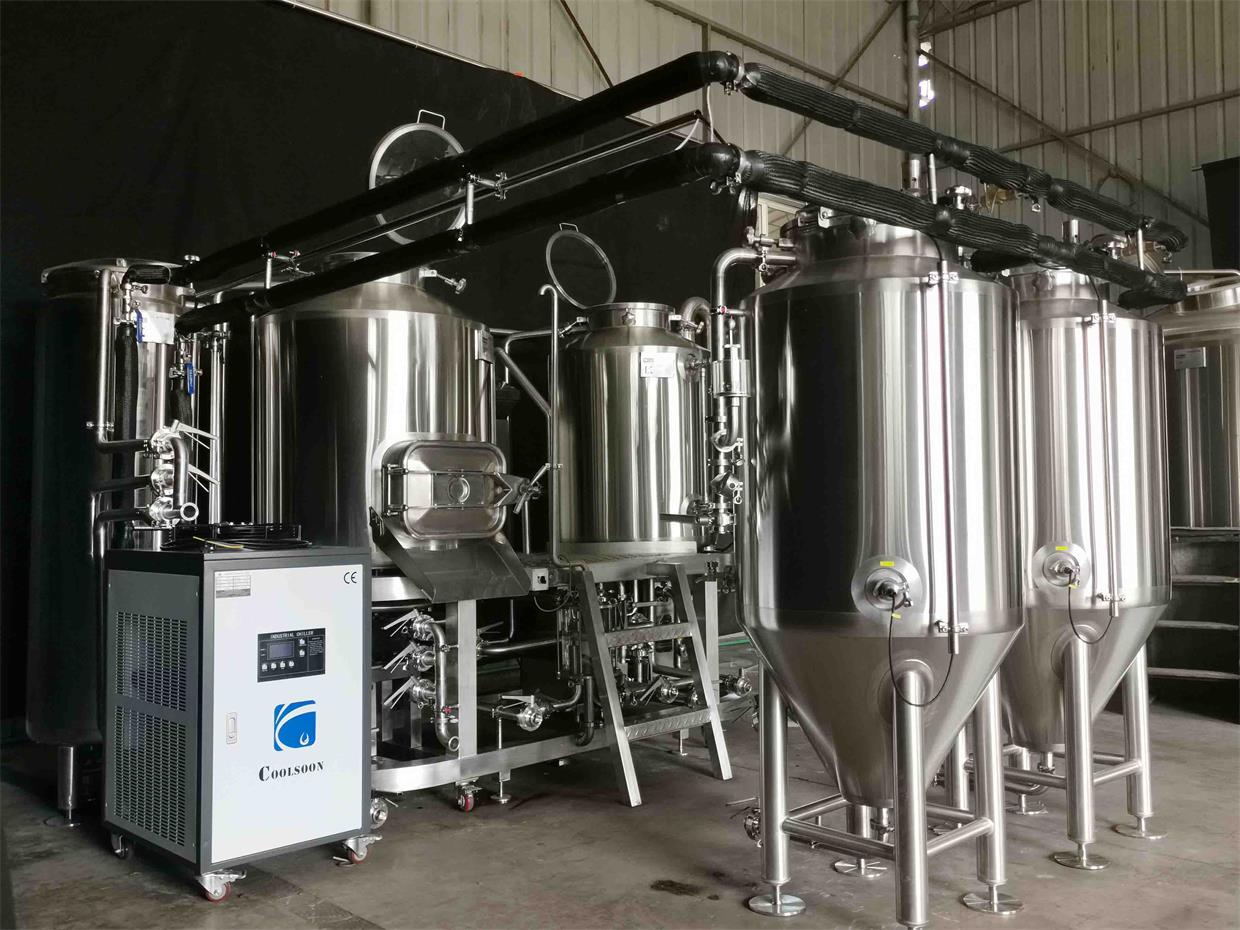What is Nano Brewery Equipment?
What is Nano Brewery Equipment?
Nano brewery equipment refers to the specialized tools and machinery required to produce small batches of craft beer, typically between 1 and 3 barrels per batch. This setup is perfect for small-scale breweries or beer enthusiasts who want to experiment with unique recipes without the high overhead costs of a full-scale brewery.
Nano brewing strikes a balance between homebrewing and microbrewing. Think of it as the Goldilocks of brewing setups—just the right size for a small operation while still offering professional-grade capabilities.
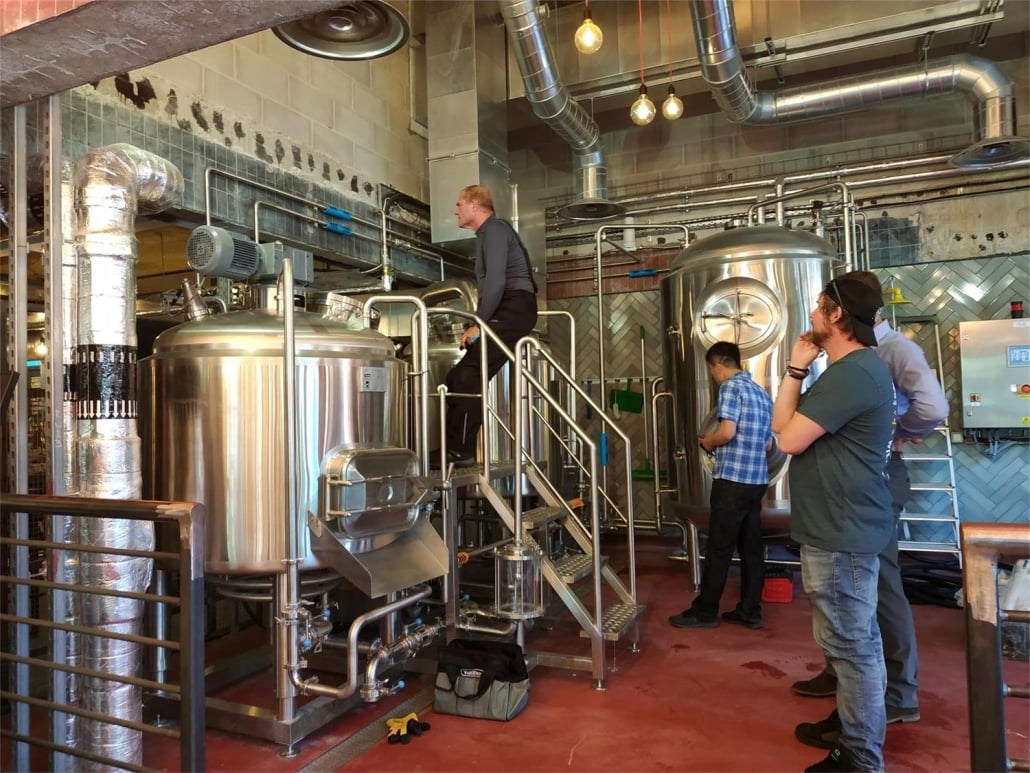
Why Nano Brewing? A Quick Overview
The craft beer industry has exploded over the past decade. Nano breweries offer several advantages:
- Affordability: Compared to larger brewing setups, nano brewery equipment is more cost-effective, making it an ideal starting point.
- Flexibility: You can experiment with recipes and pivot quickly based on customer preferences.
- Community Connection: Smaller batches mean you can cater to local tastes, creating a loyal customer base.
- Ease of Management: With smaller production volumes, managing operations is simpler.
But there’s more to it than just equipment. Nano brewing is an art that requires precision, creativity, and dedication.
Key Components of Nano Brewery Equipment
To succeed as a nano brewer, you need the right tools. Let’s break down the essential equipment:
1. Brewhouse System
The brewhouse is the heart of any brewery. It includes the mash tun, lauter tun, kettle, and whirlpool tank. These components work together to extract sugars from malted barley, boil the wort, and prepare it for fermentation.
- Mash Tun: Where grains are soaked in hot water to extract fermentable sugars.
- Lauter Tun: Separates the liquid wort from spent grains.
- Boiling Kettle: Boils the wort and allows you to add hops.
- Whirlpool Tank: Helps separate hop solids from the liquid after boiling.
2. Fermentation Tanks
These vessels are where the magic happens—yeast converts sugars into alcohol and carbon dioxide, creating beer. For nano breweries, fermentation tanks range from 50 to 300 gallons. Look for stainless steel tanks with temperature control systems for optimal results.
3. Glycol Chillers
Temperature control is critical during fermentation. A glycol chiller ensures your beer ferments at the right temperature, especially important for lagers and other temperature-sensitive styles.
4. Brite Tanks
Brite tanks are used for carbonation and storage before packaging. They ensure your beer is clear, crisp, and ready for serving.
5. Kegging and Bottling Equipment
Once your beer is ready, you’ll need to package it. Nano breweries often rely on manual or semi-automatic systems for kegging, bottling, or canning.
6. Cleaning and Sanitization Tools
Keeping your equipment clean is non-negotiable. Sanitization tools like CIP (clean-in-place) systems, brushes, and cleaning agents are essential.
Brewing Process: From Grain to Glass
The brewing process in a nano brewery mirrors that of larger breweries, but on a smaller scale. Here’s a simplified breakdown:
- Mashing: Grains are mixed with hot water in the mash tun to convert starches into sugars.
- Lautering: The sugary liquid (wort) is separated from the spent grains.
- Boiling: The wort is boiled with hops to add bitterness, flavor, and aroma.
- Cooling: The wort is rapidly cooled to fermentation temperature using a heat exchanger.
- Fermentation: Yeast is added to the wort in fermentation tanks, where it ferments over 1-3 weeks.
- Conditioning and Carbonation: The beer is conditioned in brite tanks and carbonated to the desired level.
- Packaging: The beer is kegged, bottled, or canned for distribution.
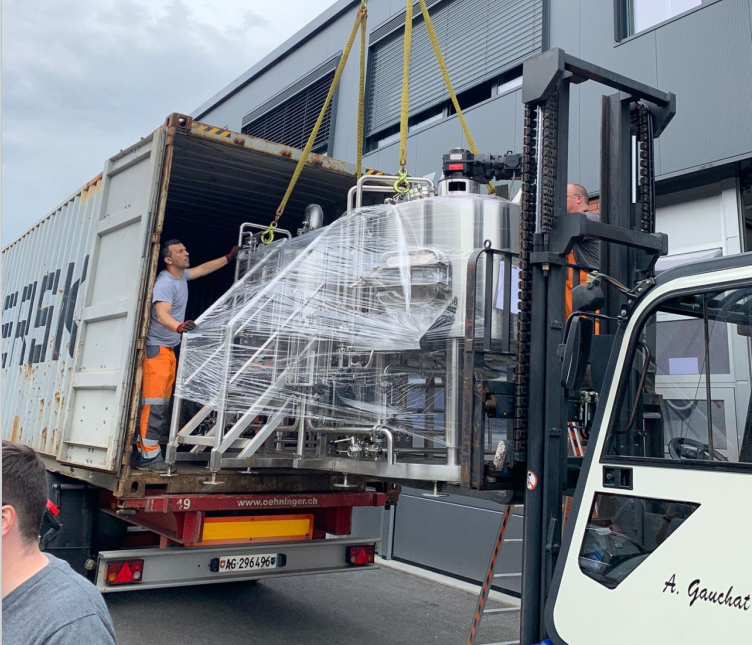
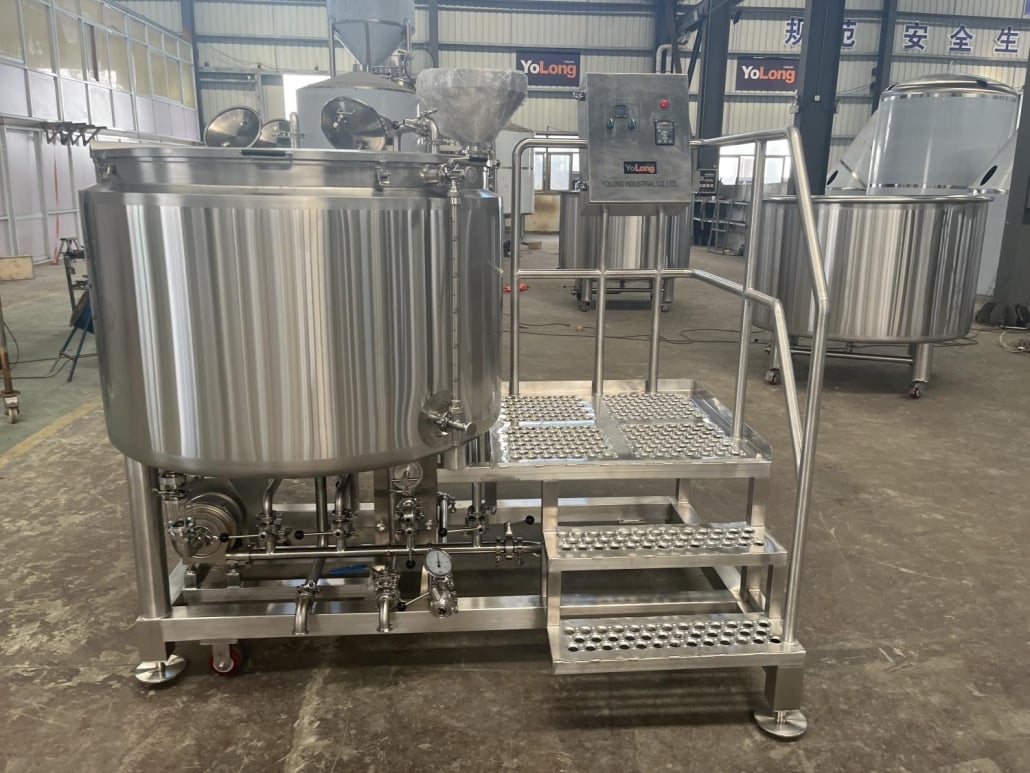
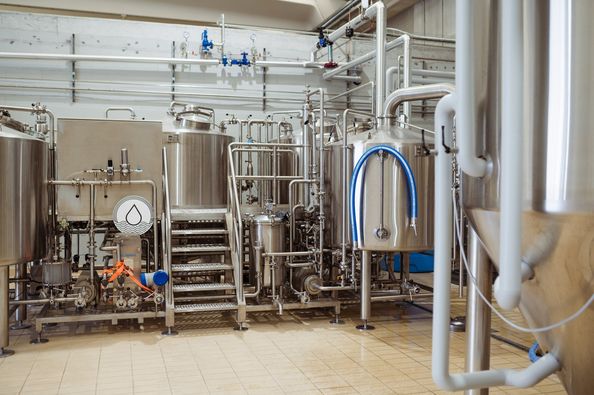
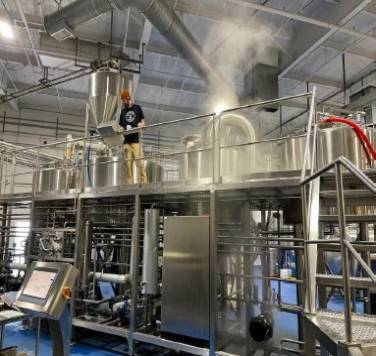
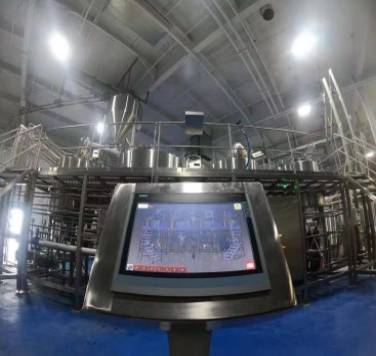

Troubleshooting Common Issues with Nano Brewery Equipment
Running a nano brewery isn’t without its challenges. Here are some common issues and how to tackle them:
1. Inconsistent Fermentation
This is often caused by temperature fluctuations or unhealthy yeast. Use glycol chillers and ensure your yeast is fresh and viable.
2. Equipment Clogs
Grain particles or hop residues can clog pipes and filters. Use high-quality filters and clean your equipment thoroughly after each brew.
3. Low Efficiency
If your mash isn’t extracting enough sugars, check your crush size and water-to-grain ratio.
4. Carbonation Problems
Flat or over-carbonated beer can ruin a batch. Use precise carbonation equipment and test levels before packaging.
Customization and Space Optimization for Nano Breweries
Nano breweries often operate in tight spaces, so optimizing your layout is crucial. Here’s a look at customization and space-saving strategies:
| Feature | Details |
|---|---|
| Capacity | Start with 1-3 barrel systems; scalable systems are available for future expansion. |
| Space Requirements | Allocate 200-500 sq ft for brewing, fermentation, and storage. Compact designs save space. |
| Customization Options | Choose modular systems that allow upgrades (e.g., additional tanks, automation). |
| Layout Tips | Place fermentation tanks near the brewhouse to minimize piping and energy loss. |
Suppliers and Price Ranges for Nano Brewery Equipment
Finding the right supplier is key. Here’s a snapshot of popular suppliers and their pricing:
| Supplier | Price Range (USD) | Special Features |
|---|---|---|
| Blichmann Engineering | $15,000 – $50,000 | Modular systems, beginner-friendly designs |
| Ss Brewtech | $10,000 – $40,000 | Durable stainless steel, advanced automation |
| Stout Tanks & Kettles | $12,000 – $45,000 | Customizable options, compact designs |
| Premier Stainless | $20,000 – $70,000 | High-end equipment with comprehensive warranties |
Installation, Operation, and Maintenance Tips
| Aspect | Details |
|---|---|
| Installation | Ensure proper electrical and plumbing connections. Use professional installers for large systems. |
| Operation | Follow the manufacturer’s guidelines for each piece of equipment. Document processes for consistency. |
| Maintenance | Regularly inspect seals, gaskets, and valves. Perform CIP after every batch to maintain hygiene. |
How to Choose the Best Nano Brewery Equipment Supplier
Choosing the right supplier can make or break your brewing experience. Consider these factors:
| Criteria | Details |
|---|---|
| Reputation | Look for suppliers with excellent reviews and testimonials. |
| Customization | Opt for suppliers who offer tailored solutions to fit your space and brewing needs. |
| Support and Training | Some suppliers offer on-site training and 24/7 technical support. |
| Warranty and Service | Check for warranties that cover key components and ask about spare part availability. |

Pros and Cons of Nano Brewery Equipment
| Advantages | Limitations |
|---|---|
| Affordable startup costs | Limited production capacity |
| Great for recipe experimentation | Scalability can be challenging |
| Ideal for local community engagement | Higher cost per unit of beer produced |
| Easier to manage and maintain than larger setups | Space constraints may limit expansion |
FAQ
| Question | Answer |
|---|---|
| What is the cost of setting up a nano brewery? | Expect to invest $50,000 to $100,000 for a fully operational setup, depending on customization and scale. |
| How long does it take to brew a batch of beer? | A typical batch takes 2-4 weeks, depending on the style and fermentation process. |
| Can I upgrade my nano brewery later? | Yes, many systems are modular and allow for scalability as your business grows. |
| Do I need a brewing license? | Yes, consult your local regulations for the necessary permits and licenses. |
| How profitable is a nano brewery? | Profitability depends on your market, pricing, and overhead costs. Nano breweries often excel in niche markets. |
Frequently Asked Questions (FAQ)
- Q1: What brewhouse size qualifies as Nano Brewery Equipment?
A1: Typically 1–3 bbl per batch with annual output under ~1,500–2,000 bbl. Some nanos operate pilot tanks as small as 0.5 bbl for R&D. - Q2: Should a nano start with unitanks or separate FVs and brite tanks?
A2: Pressure-rated unitanks (15–30 psi) save space and capex by combining fermentation and conditioning. Add one small brite tank if you package or need rapid turnaround. - Q3: What utilities do most nano systems require?
A3: 208–240V single- or three-phase power (20–80+ kW for electric heat), 1–2” cold water service, 5–10 scfm compressed air at 90–120 psi, floor drain, and a glycol chiller sized to peak fermentation plus 10–20% margin. - Q4: How do I control oxygen exposure on a nano budget?
A4: Use closed transfers, purge lines and vessels with CO2, add a simple hop doser for dry hop additions, and verify purges with an inexpensive DO spot-checker if possible. - Q5: What KPIs prove my nano cellar is optimized?
A5: Water-to-beer 3.5–5.0 hL/hL, consistent boil-off rate, post-transfer DO 20–50 ppb, tank residency 7–10 days (ales), and CO2 usage 0.6–1.0 lb/bbl with spunding.
2025 Industry Trends: Nano Brewery Equipment
- Electrified brewhouses: 3–5 bbl electric systems reduce venting needs and speed permitting in mixed-use spaces.
- Compact, modular layouts: Skid-mounted brewhouse + stacked unitanks maximize production in 200–500 sq ft.
- Oxygen-minimized workflow: Closed dry-hopping, spunding, and low-TPO canning become standard even at nano scale.
- Data-lite automation: Affordable PLC/HTCs with recipe steps, batch logging, and remote alerts improve repeatability.
- Sustainability wins: Heat recovery to HLT, rinse-to-endpoint CIP, and CO2-saving spunding lower OPEX.
2025 Benchmarks and Specs for Nano Brewery Equipment
| Metric / Spec | 2023 Typical | 2025 Target/Best Practice | Why it Matters | Sources |
|---|---|---|---|---|
| Brewhouse size (bbl) | 1–3 | 1–5 (electric/hybrid) | Flexibility for demand | Brewers Association (BA) |
| Water-to-beer (hL/hL) | 5.0–7.0 | 3.5–5.0 | Utility savings | BA Sustainability |
| Tank residency (ales, days) | 10–14 | 7–10 | Capacity without new tanks | BA/MBAA |
| Post-transfer DO (ppb) | 80–150 | 20–50 | Shelf life, flavor stability | ASBC DO/TPO |
| CO2 use (lb/bbl) | 1.0–1.5 | 0.6–1.0 (spunding) | Cost and footprint | Industry case studies |
| Electric brewhouse share (%) | ~35–45 | 55–70 | Easier installs, code-friendly | Vendor/lender surveys |
Selected references: Brewers Association — https://www.brewersassociation.org; American Society of Brewing Chemists (ASBC) — https://www.asbcnet.org; Master Brewers Association of the Americas (MBAA) — https://www.mbaa.com; U.S. Department of Energy — https://www.energy.gov
Latest Research Cases
Case Study 1: Electric 3 bbl Nano Upgrade in Mixed-Use Space (2025)
Background: Startup nano needed fast permitting and minimal venting in a downtown lease.
Solution: Installed a 3 bbl electric brewhouse, insulated kettles, stacked 7 bbl unitanks, and a compact CIP cart; added basic PLC logging and closed transfer SOPs.
Results: Opening timeline shortened by ~8 weeks; water-to-beer improved to 4.2 hL/hL; post-transfer DO 25–40 ppb; break-even reached in month 11.
Case Study 2: Spunding + Closed Dry-Hop Cuts CO2 and Returns (2024)
Background: Rising CO2 costs and oxidation-related returns on hazy SKUs.
Solution: Upgraded to 30 psi unitanks, adopted spunding at 1.6–2.0 vol CO2, added purgeable hop doser and closed-loop dry hopping.
Results: CO2 purchases down 33%; TPO in cans reduced from 70–110 ppb to 20–35 ppb; stale/oxidized returns dropped 75% over six months.
Expert Opinions
- Bart Watson, Chief Economist, Brewers Association
Viewpoint: “Taproom-led nanos thrive when equipment choices support fast turns and consistent quality—capital efficiency matters as much as recipes.” - Mary Pellettieri, Brewing Quality Consultant; Author
Viewpoint: “Even at nano scale, hygienic design and oxygen control are non-negotiable. Specify passivated stainless, validated CIP, and closed transfers.” - Scott Janish, Brewer and Author, The New IPA
Viewpoint: “For hop-forward nanos, closed dry-hopping and minimized cold-side oxygen make small batches punch well above their weight.”
Practical Tools/Resources
- Brewers Association: Startup, safety, and sustainability guides — https://www.brewersassociation.org
- ASBC Methods (DO/TPO, VDK) — https://www.asbcnet.org
- MBAA Technical Quarterly and webinars — https://www.mbaa.com
- U.S. DOE Better Plants (electrification, heat recovery) — https://www.energy.gov
- Brewer’s Friend and other scheduling/costing tools — https://www.brewersfriend.com
Last updated: 2025-09-01
Changelog: Added 5 targeted FAQs; introduced 2025 nano equipment trends with benchmark table and sources; provided two case studies on electric installs and oxygen-minimized workflows; added expert viewpoints and practical resources
Next review date & triggers: 2026-02-15 or earlier if BA/ASBC benchmarks update, local permitting/energy codes change, or new low-TPO packaging data emerges
Share this entry
Interested in learning more about Brewing Systems including additional details and pricing information? Please use the form below to contact us!
YOLONG BREWERY EQUIPMENT FAQS
- Commercial Brewery / Craft Brewery / Microbrewery / Nanobrewery
- What is The Difference Between Craft Beer and Industrial Beer?
- The Bespoke Differences In Custom Brewing Systems
- Everything You Need to Know About Kettle Souring
- How to Choose Brewing Equipment for Your business?
- How To Choose The-Best Partner To Build Your Commercial Microbrewing System?
- Two Detection Sensors That You Need To Use In Your Brewhouse System
- Remote Control Applications in Brewing Equipment/How does it work?
- How To Clean Your Brand New Brewery Tanks?

